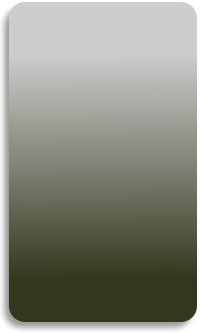


©2016 Deborah Richardson





Privacy Policy
Copyright




Lace Making in Turvey
Lacemaking in this area began in the late 1500's and was probably introduced by the Hugenots. Some people say that Katherine of Aragon, the first wife of King Henry VIII of England, taught local people the craft -
'Bone lace' or bobbin lace was worked in homes and special 'lace-
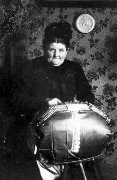
The picture on the left shows an elderly lady at her lace pillow. The pillow was usually stuffed with horsehair or straw until it was very firm -
The pattern would be pinned on and then bobbins were wound with thread and hung in pairs. Pins were added as the lace grew to ensure it took on the right shape. The maker would have to regularly move the lace up the pillow as it grew in length. When finished the pins were all removed and the lace was washed and dried ready for sale.
For fascinating old Newspaper clippings relating to the local lace trade.
Find out more about the equipment used to make lace (including video)
The lace makers were taught by parents, elder siblings, friends and at lace schools -
It declined during the 19th century when machined lace was so much cheaper and quicker to make. There were also issues with health, education and morality!
Bedfordshire lace has a distinct pattern of 'leaf' shapes and edge picots. As well as the Beds style of lace, Turvey also produced the intricate Bucks style.
Most lace makers were women, however there were also men making lace -
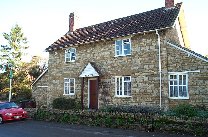

This building in Newton Lane, Turvey is the old lace school. Here children were taught lace making (and some scripture).
Children making lace was a controversial subject. Parents often faced the choice of paying a penny a week to send their child to school.. or having them stay home and make lace, earning much needed money for the family.
In the 1830-
The 1841 census lists 63.
Records from 1894-
|
Lacebuyers |
|
|
|
|
1748 |
6 November |
Thomas Knight |
Lacebuyer |
|
1749 |
5 September |
Henry Peers |
Lacebuyer |
|
1783 |
26 September |
James McCron |
Dealer in Lace |
|
1789 |
5 July |
Robert Peers |
Of Olney, Dealer in Lace |
|
1795 |
6 September |
John Hare |
Of Olney, Lacedealer |
|
1798 |
30 June |
Robert McCron |
Of Olney, Lacedealer |
|
1809 |
4 November |
Thomas Pinkerd |
Lacedealer |
Lace Making Burials in Turvey Parish Registers 1717 - 1809
Thomas Pinkerd’s wife was buried 6 days later.
|
Lacemakers |
|
|
|
1717 |
6 June |
Elizabeth Draper |
|
1717 |
13 January |
Sarah Brice |
|
1720 |
6 March |
William Newman |
|
1722 |
6 June |
Susanna Church |
|
1722 |
5 January |
Elizabeth York |
|
1722 |
30 January |
Mary Woodin |
|
1725 |
9 May |
Mary Rose |
|
1727 |
20 Decemeber |
Richard Harlot |
|
1727 |
23 February |
Ann York |
|
1728 |
13 August |
Mary Harvey |
|
1728 |
2 June |
Cathering Skevington |
|
1732 |
9 March |
Ann Peers |
|
1733 |
23 October |
Ann Smith |
|
1734 |
10 February |
Susanna Hulat |
|
1736 |
6 June |
Elizabeth Covington |
|
1736 |
16 September |
Elizabeth Tucker |
|
1736 |
21 September |
Jane Tebbutt |
|
1744 |
16 October |
Ann Covington |
|
1746 |
13 August |
Ann Staunton |
|
1746 |
26 August |
Ann Plaisterer |
|
1747 |
26 January |
Mercer Sumper |
|
1748 |
6 December |
Elizabeth Howard |
|
1749 |
9 October |
Ann Newman |
|
1749 |
24 October |
Mary Johnson |
|
1749 |
8 December |
Ellen Martemas |
|
1751 |
21 June |
Elizabeth Hickman |
|
1755 |
14 June |
Mary Sharp |
|
1767 |
4 February |
Richard Prigmore |
|
1768 |
14 October |
John Peers |
Of course, this is only the ones who had their occupation noted -
Lace making was very common, especially amongst older women. Many children also made lace.
Very few occupations are noted in the Parish Register after 1770 -
Please note that before 1750, the year ended in March.
The 1847 Post Office Directory ha one lace dealer listed for Turvey -
The 1877 Post Office Directory has John Gasking as a lace manufacturer, and he is also listed in Kelly’s Trade Directory for 1885 but there are no listings for the lace industry in Turvey by the 1898 edition of Kelly’s.
For more information on the Lace industry and lace making today why not visit the great sites of The Lace Guild and Tussah.
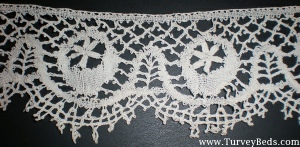
Traditional Bed’s lace. Thank you to Rachel Cotton for this photograph. Click to enlarge.
Tanders Day
Many lace makers celebrated the 30th November, as St Andrew was their patron saint. The day was often called “Tanders”. This is the origin of the name of Tandy’s Close in Turvey.
Mr Charles Longuet Higgins of Turvey Abbey was born on St Andrews Day, 30 November 1806. Every year he would give the villagers figs to celebrate.
There are records of parties going on in the evenings, with games such as bobbing for apples and blind man’s buff played.
Yon villager who weaves at her own door
Pillow and bobbins all her little store.
William Cowper, “Truth” c.1790
The spinsters and the knitters in the sun,
And the free maids that weave their threads with bone.
William Shakespeare, “Twelfth Night” c. 1601

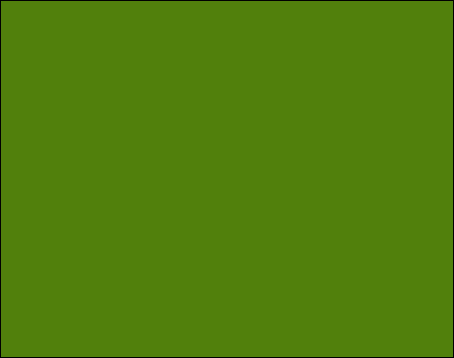
The Turvey Web Site -
This website and its content is copyright of Deborah Richardson -
Any redistribution or reproduction of part or all of the contents in any form is prohibited other than the following:
You may print or download to a local hard disk extracts for your personal and non-
You may copy the content to individual third parties for their personal use, but only if you acknowledge the website as the source of the material
You may not, except with our express written permission, distribute or commercially exploit the content. Nor may you transmit it or store it in any other website or other form of electronic retrieval system.
